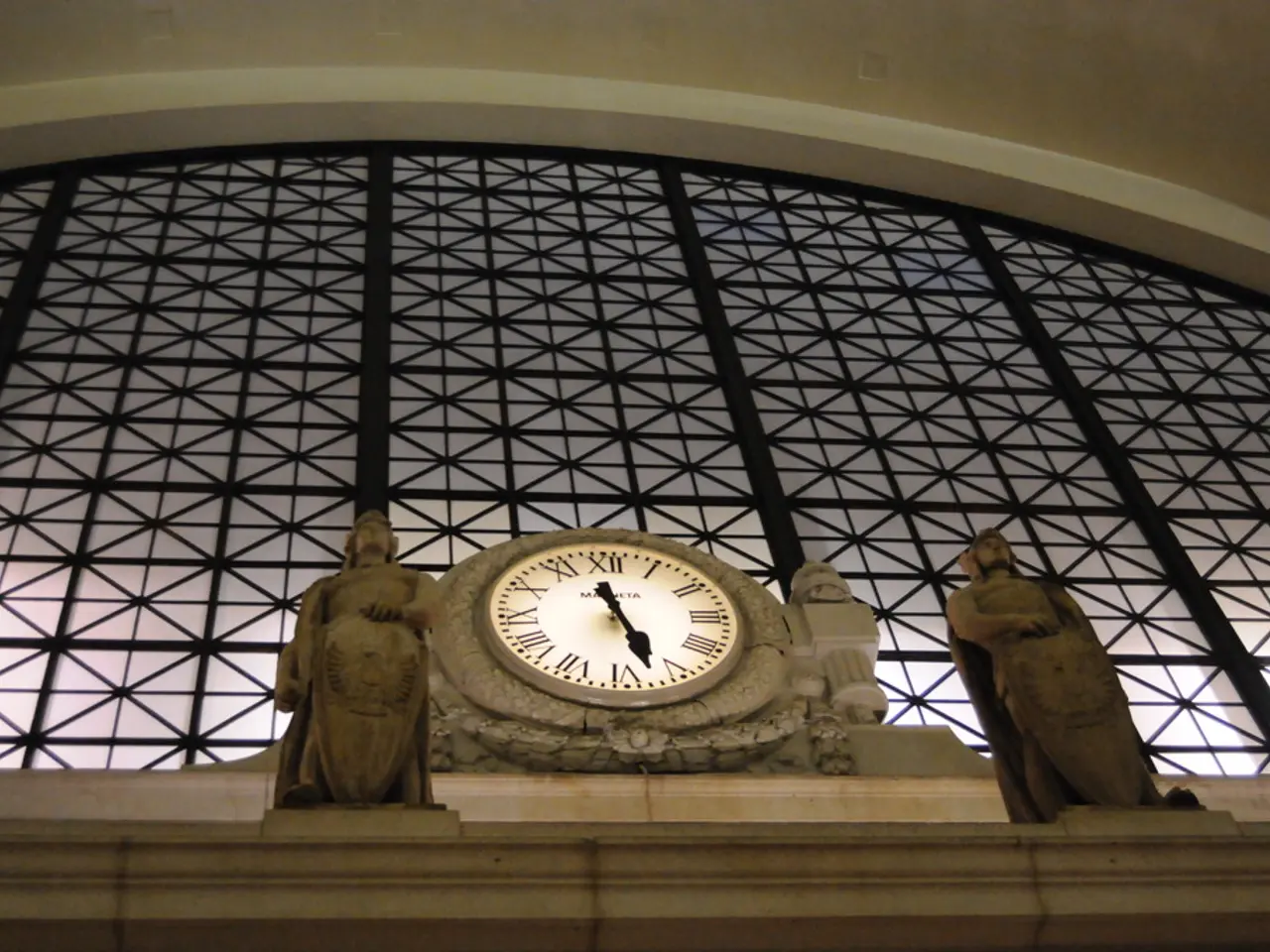Clock made by Sperry and Shaw back in production for sales after temporary pause
In the heart of a collector's study, a 180-year-old timepiece stands tall, its pendulum swinging rhythmically. This is no ordinary clock - it's a Sperry and Shaw clock, a piece of American horological history.
The movement of this clock, known for its "Jerome-like" design and stamped with the names Sperry and Shaw, New Jersey, is a testament to the craftsmanship of the era. However, a closer look reveals that it's not all original. The hands and dial, while period-correct, are not the clock's first.
The heart of the clock, its movement, was disassembled and cleaned in January 2019, and all parts were found to be in good order. Service marks, indicated by punch marks around most pivot holes, suggest that the movement had been serviced multiple times.
The count and drop levers, crucial components of the clock's mechanism, were not synchronised. To function correctly, the drop lever should be deep in the cam slot at the same time the count lever is in one of the deep slots of the count wheel, and the paddle, radial to the count wheel, had to be bent slightly to ensure it pointed directly at the wheel hub. Subtle changes were made to the movement, which resulted in the strike side working.
The lower tablet of the clock contains an engraved copy of the Bay of Quinte, Ontario, adding a touch of Canadian charm to the American-made clock. The clock's case, measuring 25 1/2 inches in height by 14 inches in width, is typical of an ogee clock.
The clock, made between 1844 and 1851, is a fine example of the New York style Sperry and Shaw clock. Its four free-standing turned columns reflect the decorative period of the Empire style popular in the mid 1850s. The clock's case houses narrow brick-shaped wafer weights, a common feature of Sperry and Shaw clocks.
Despite extensive research, the exact manufacturers of these Sperry and Shaw clocks remain elusive. It is believed that Sperry and Shaw were companies or brands associated with selling or marketing these clocks, with the physical manufacturing often done by specialized clockmaking firms or factories contracted by them.
After 4 days of testing, the dial and hands were reinstalled, and the clock was placed back on its shelf, ready to keep time for another century. The 30-hour ogee clock, due to its large gears, overall simplicity, and absence of mainsprings, is a great starting point for beginners in clock repair.
Despite the vintage charm of the Sperry and Shaw clock, some parts, like the hands and dial, have been replaced. In the realm of technology and data-and-cloud-computing, this clock's mechanical movement is an enduring relic, requiring repair and maintenance for its continued function.




